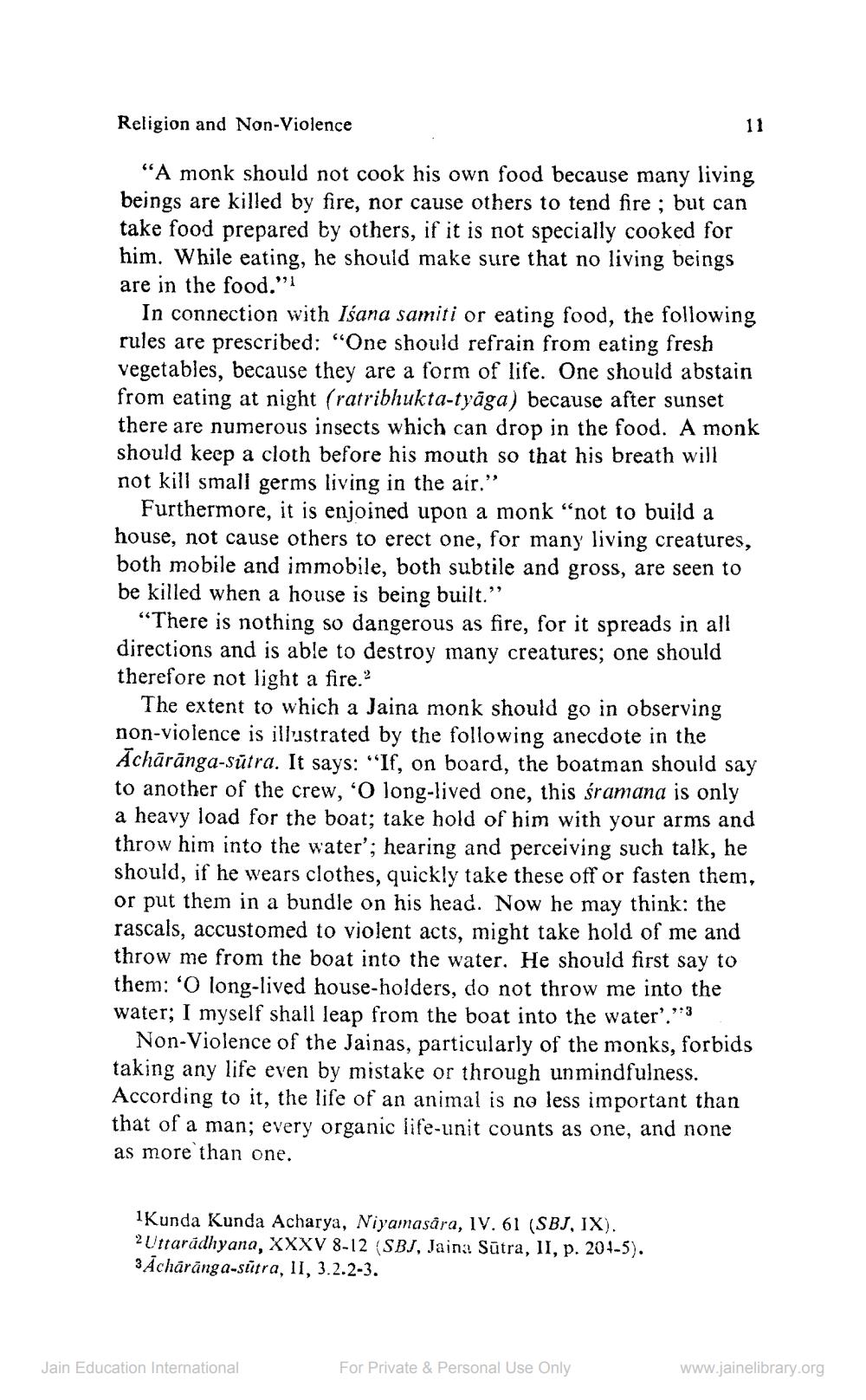________________
Religion and Non-Violence
"A monk should not cook his own food because many living beings are killed by fire, nor cause others to tend fire; but can take food prepared by others, if it is not specially cooked for him. While eating, he should make sure that no living beings are in the food."
In connection with Isana samiti or eating food, the following rules are prescribed: "One should refrain from eating fresh vegetables, because they are a form of life. One should abstain from eating at night (ratribhukta-tyāga) because after sunset there are numerous insects which can drop in the food. A monk should keep a cloth before his mouth so that his breath will not kill small germs living in the air."
Furthermore, it is enjoined upon a monk "not to build a house, not cause others to erect one, for many living creatures, both mobile and immobile, both subtile and gross, are seen to be killed when a house is being built."
"There is nothing so dangerous as fire, for it spreads in all directions and is able to destroy many creatures; one should therefore not light a fire.2
The extent to which a Jaina monk should go in observing non-violence is illustrated by the following anecdote in the Achārānga-sutra. It says: "If, on board, the boatman should say to another of the crew, 'O long-lived one, this śramana is only a heavy load for the boat; take hold of him with your arms and throw him into the water'; hearing and perceiving such talk, he should, if he wears clothes, quickly take these off or fasten them, or put them in a bundle on his head. Now he may think: the rascals, accustomed to violent acts, might take hold of me and throw me from the boat into the water. He should first say to them: 'O long-lived house-holders, do not throw me into the water; I myself shall leap from the boat into the water'."
Non-Violence of the Jainas, particularly of the monks, forbids taking any life even by mistake or through unmindfulness. According to it, the life of an animal is no less important than that of a man; every organic life-unit counts as one, and none as more than one.
1Kunda Kunda Acharya, Niyamasara, IV. 61 (SBJ, IX). 2 Uttaradhyana, XXXV 8-12 (SBJ, Jaina Sūtra, II, p. 204-5). 3 Acharänga-sutra, II, 3.2.2-3.
11
Jain Education International
For Private & Personal Use Only
www.jainelibrary.org




